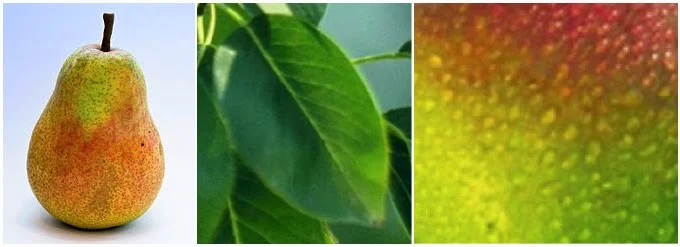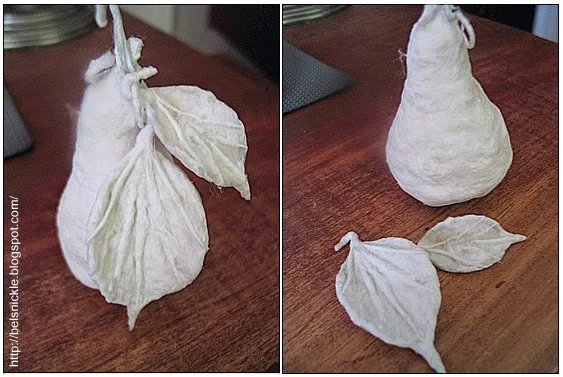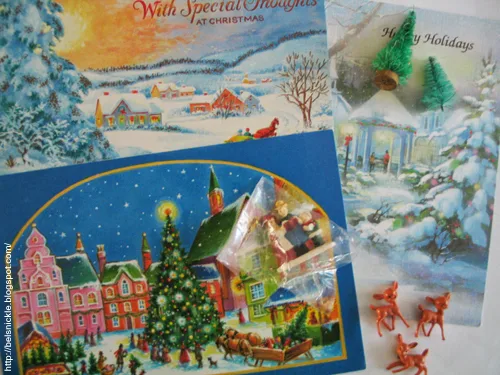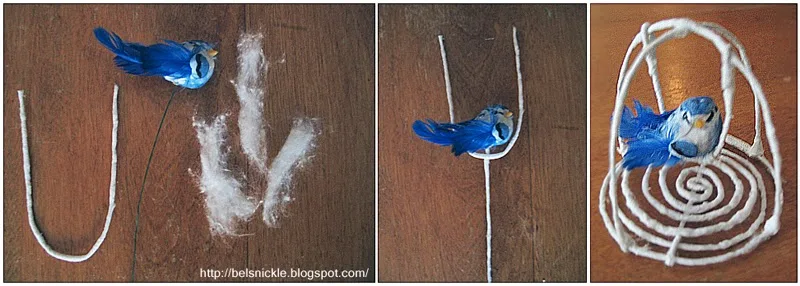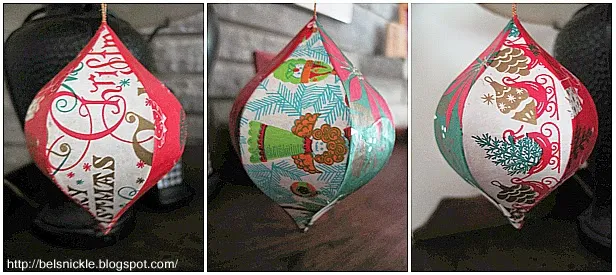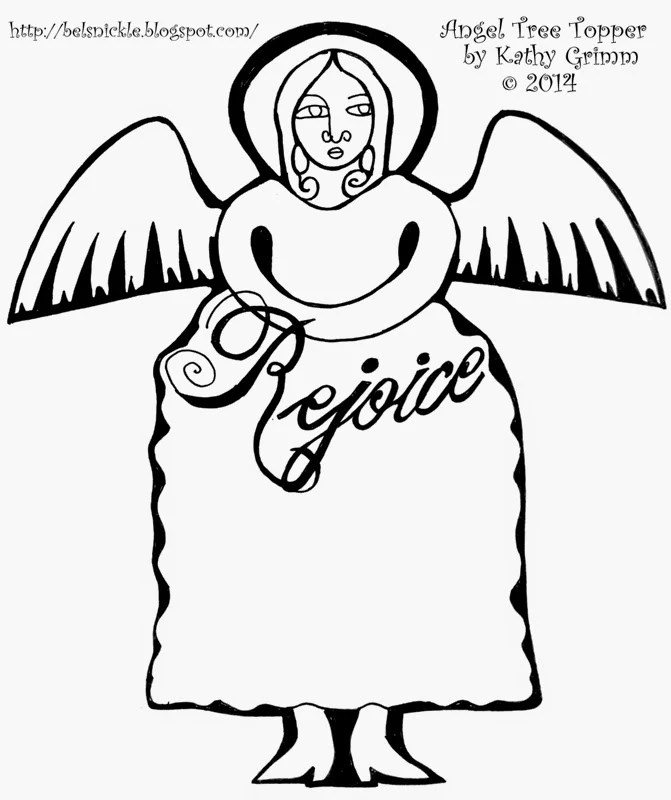 |
| My hand sculpted, "spun" (wrapped) cotton pear. Most cotton batting fruits are in fact spun in factories with machines. You can see how this is done in the video posted here. It is very rare to find antique spun cotton fruit that is actually handmade. |
My pear picture above, measures approximately four inches from top to bottom. However, I suggest that inexperienced students craft one of these much smaller than my own. The smaller you make your fruit the less difficult it will be to paint and sculpt it realistically. This is because covering smaller surface areas with cotton and glue is by far a less lumpy affair. Lumps and imperfections can lend a certain realistic charm to your ornament. But I can imagine that this process will drive perfectionists crazy before they are satisfied with the results.
Supply List:
- cotton balls
- newsprint
- masking tape
- German glass glitter (optional)
- acrylic paints: yellow, gold, orange, white, green and brown
- white school glue
- tacky glue
- thin wire
- small soft paint brush for applying the acrylic paints
- light mixture of cornstarch and water (1 cup water, 1 teaspoon of cornstarch, mixed)
- acrylic matte gel medium
- Crush newsprint into a pear shape and cover this in masking tape. (pictured below)
- Unravel many cotton balls so that these resemble fine, thin layers of batting.
- Layer this cotton with white glue onto the surface of your masked pear shape. This will take much time and patience. You will do many layers, perhaps five or six until the pear is wrapped well. Always end with a coat of glue.
- Use your fingers to lightly smear the glue over the surface of the cotton. I have found that your fingers are the best tools when working with these materials instead of using brushes for the glue.
- Dipping your cotton or fingers into a light mixture of water and cornstarch may help the process a bit. This mixture helps to smooth out lumps while you work. I only use it when I am working surfaces that measure over three inches across.
- Set aside the pear to dry between layers. (Note, this may take several days)
- Twist a couple of leaf shapes with wire. (pictured below)
- Now cover the inside of the leaf shapes with masking tape. Snip off ends that you do not wrap around the edges.
- Cover the leaves with a layer of cotton and glue.
- Shape the veins of the leaves by rolling out long thin pieces of cotton with glue in the palms of your hands. Use tacky glue to paste these to the surface of your leaves. Cover and coat with a final layer of cotton and glue.
- Twist stems and vines after covering thin wire with cotton and glue, and allow these to dry.
- Dry your pear and it's leaves for several days before painting the ornament pieces with acrylic paints.
- Use a hook and a wire to hang the pear while painting it.
- I brushed the majority of my pear with yellows and golds. Then I worked in a bit of lime green and orange at either end of the pear.
- Paint the stem brown.
- Then I painted the leaves dark green and the veins of the leaves lighter green. Let the pear dry over night.
- Cover the leaves and stem with an acrylic, matte gel medium.
- Brush on a last, thick layer of white glue and roll the pear into a dish of glass beads. Hang the pear to dry over night.
- Hook on the pear leaves and add a cotton covered wire to finish the ornament.
 |
| Pictured above are two close up photos of my pear shape after I have masked the surface completely. (Step 1.) |

